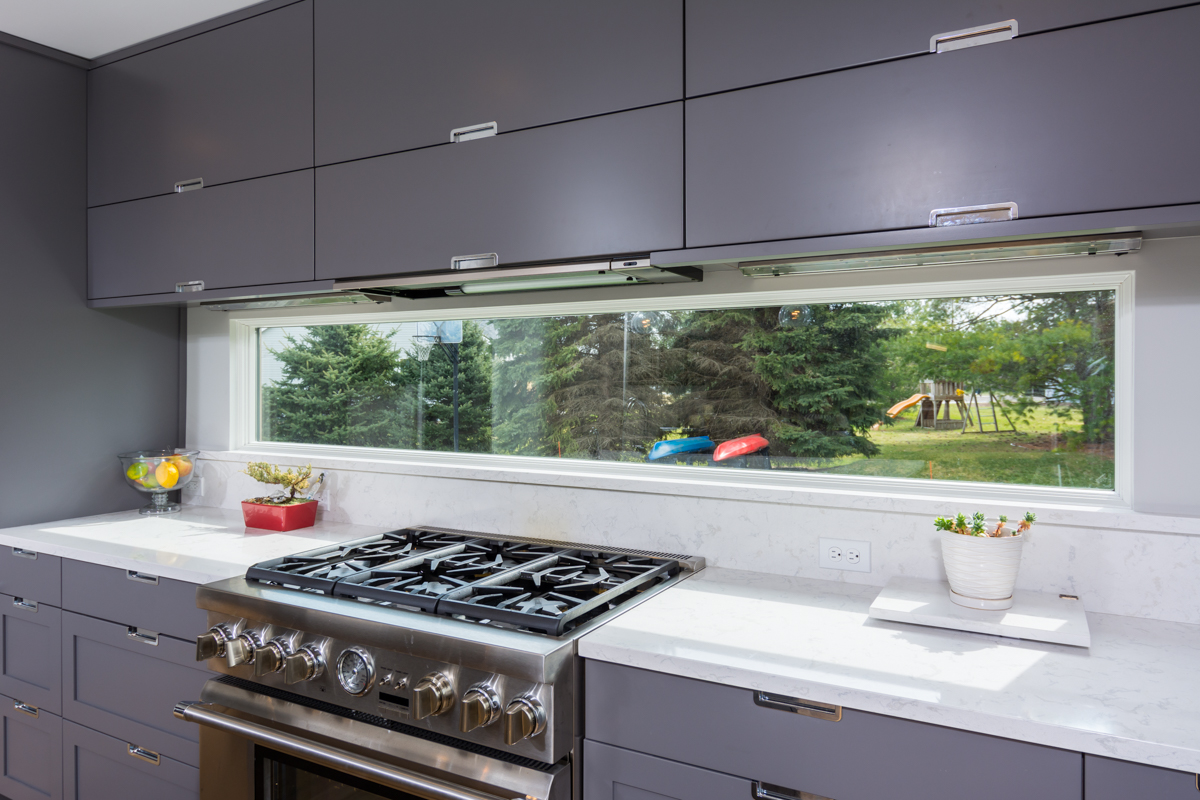What You Should Know About Range Hoods for Kitchen Remodeling
Range Hoods - What To Consider For Your Kitchen Remodel
While a range hood's certainly not the most glamorous appliance in your kitchen, ventilation is one of the most important elements! Range hoods remove unpleasant or harmful byproducts produced by cooking like steam, smoke, carbon monoxide, odors, and grease. They do this by filtering the "dirty air" through activated carbon and then moving the air to the outside of your home. Let's take a look at some of the important factors to consider when choosing a range hood:
Ducted, Ductless or Downdraft?
When it comes to types of range hoods, there are basically three choices. The one you choose will rely on several factors, including proximity to the exterior of the home.
Ducted Range Hoods
A ducted hood removes all forms of air pollution from the kitchen by drawing in air, filtering out airborne grease through carbon filters and then removing the air through ducting to the outside of the home. Ducted systems are also effective at removing moisture and excess heat from the kitchen.
This is a common and extremely efficient system for most kitchens when properly sized. The placement of the hood needs to be on an exterior wall, or through the ceiling to a stack that vents externally. Many hanging hoods offer kits to cover the ductwork and can be very visually pleasing.
Ductless Range Hoods
A ductless system uses carbon filters in addition to grease filters to remove odors and airborne grease from the air. The cleaned air is then recirculated back into the room. These are often seen in over the range microwaves where there is no means or room to run ductwork. While they get the job done, they are less efficient that ducted systems and cannot remove excess heat and moisture.
Downdraft Systems
Typically used for an island cooktop, downdraft systems are ducted. The duct work typically is run under the floor and vented externally. Downdraft systems are efficient at removing most cooking byproducts like smoke, odors and carbon monoxide, but are not as efficient at removing moisture and airborne grease.
Internal, Inline and External Range Hood Blowers
Placement of the range hood blower can go far in determining it's efficiently. There are three primary forms of blowers.
Internal blowers – located inside the range hood canopy
Inline to the duct run – the blower is located somewhere along the exhaust ducting
External to the range hood – the blower is located wither on the roof or on an external wall.
The type of blower is dictated by the needs of the cooking appliance. Typically the decision is based on the BTU to CFM (cubic feet per minute) needs of the range or cooktop. If the CFM is around 600cfm, there isn't much benefit to placing the blower separate from the range hood.
Noise reduction is one of the major reasons for installing a remote blower. The optimal way to ensure noise reduction is to place the blower on the other side of a 90 degree bend. You can also add a noise reducing duct silencer system in the duct run.
Additional Range Hood Considerations
Sizing your range hood is an important consideration. The ultimate CFM or cubic feet of air removed per minute, will depend on the BTUs of your cooking surface. Your appliance will have a rating that will tell you the CFM necessary for proper removal of air pollution.
Some units offer “boost mode” which is typically the highest speed of a range hood combined with a safety feature that will automatically reduce speed to a lower level after a preset time. This is a useful feature. Along with boost mode, make sure your range hood offers at least three speed settings.
If you install a ductless system make sure that it includes a carbon filter after the grease filters. A carbon filter will eliminate odors and other contaminants. If your range hood is connected to an external duct, remove the charcoal filter as it will only reduce airflow and increase noise.
Lighting is another area to consider when selecting your range hood. Today the most common lighting types are halogen, fluorescent and LED. Most modern range hoods use halogen or LED lighting. LED is the most energy efficient and many manufacturers are phasing ut other forms of lighting in favor of LED.
Another new technology to consider is called Perimeter Suction Filter System. This approach replaces traditional mesh filters with “airflow collector slots” surrounding a center panel. Airflow speeds up when forced through a smaller space. This design is extremely efficient and creates an “air curtain” around the cooktop trapping airborne contaminants. It offers improved edge capture, a more modern sleek look, is easier to clean and produces less noise.
Range hoods are a vital functional component of a well designed kitchen. Your design build contractor can help you to determine the best option for your particular kitchen. With new technology becoming available, today's range hoods are more energy efficient, quieter and stylish. While it's not the most glamorous appliance in your kitchen, it might well be the most important.
For MORE INFORMATION: Visit our Home Page to learn about our complete list of services.
If you're planning a kitchen remodel, give the design experts at Forward Design Build a call. We've created luxurious chef's kitchens for homeowners throughout the Ann Arbor area and we can do the same for you!

